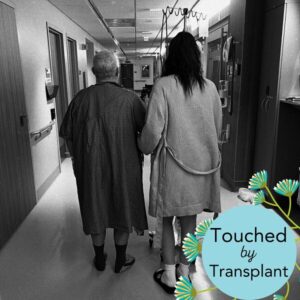Six years ago, Eric LeGrand sustained a spinal cord injury while playing football for Rutgers University. The standout defensive tackle became paralyzed from the neck down with a 0-5% chance of regaining neurological function according to his doctors.
In 2011, after months of intensive therapy at the renowned Kessler Institute for Rehabilitation, Eric was weaned off the ventilator, and recovered movement in his neck, shoulders and trunk. He signed an honorary NFL contract in May 2012 as an undrafted free agent. A sports broadcaster, today, Eric continues to strive for mobility and independence while fundraising to support advancements in spinal cord injury research and adaptive technology.
We asked the founder of Team LeGrand of the Christopher & Dana Reeve Foundation what keeps him moving forward.

Eric, now a sports broadcaster, maintains an honorary NFL contract
Eric, how much did you know about spinal cord injuries before you were injured?
I knew nothing of spinal cord injuries before I was injured. During my recovery, there was so much new information about physical therapy, basic care, medications and insurance…it was extremely overwhelming for my mother and me. That was when we learned about the Christopher & Dana Reeve Foundation. They answered all our questions and helped us to navigate through this new part of our lives.
How did family and friends respond to your injury?
My family and friends were, naturally, concerned. Doctors said I would be using a ventilator to breathe for the rest of my life and that I may never eat solid foods again. My mother set the example that they would all be positive and supportive as I worked through the first few weeks of my recovery. She would kick out anyone who was being negative or doubtful about my progress.
I feel that her approach helped a lot for my own mindset. Before I knew it, I was breathing on my own and back to eating my favorite meals. I was receiving Tweets and texts from my Rugers family wishing me the best. Even my coach would come to the hospital so my mom could get some rest. People don’t always realize that the little things mean the most in those moments.
When I returned to the Rutgers Stadium in 2011 to lead the team out to field in their game against West Virginia, the fans cheered and shouted at my return, showing nothing but love and support. It was the moment I’ll never forget.
How did it feel when you began to regain some bodily sensation?
The first sensation I felt was in my shoulders. For the first time in a while, I was able to shift my neck. That little spark of movement has been fuel that keeps pushing me forward. If we can find technology to help individuals like me regain sensation and movement, it will be a game changer and it will have major health benefits for people living with a spinal cord injury.

Eric believes treating paralysis through technology “will be a game changer”
What helps you to stay motivated today?
The staff at Kessler Institute in West Orange, NJ has kept me going, even on tough days. There will always be times when I don’t feel like doing my physical therapy, or just feel down, but they don’t let me make excuses. They keep me positive and inspired to continue improving, even if it is just a little bit.
I have learned to appreciate the small milestones, like gaining movement and sensation in my lower shoulders, which I can then use to move my arm a bit. A few years ago, I couldn’t do that. All these small victories lead to the bigger ones, and eventually, my end goal of walking again.
I’ve been fortunate to have people follow me from before my injury who continue to provide support up to this day. I don’t feel like a different person. Yes, things have changed and I’m not able to do certain things, but for the most part, I’m still me. While living with paralysis, I have been able to build success on a different path than I intended. I am happy with the results.

Eric’s “different path” post-injury includes a busy career and advocacy work
When did you realize how expensive a spinal cord injury could be?
One of the moments that was an eye-opener for me was when it was time for me to leave the hospital. I realized I wouldn’t be able to move around my home with my wheelchair because of spacing issues. We had to completely rebuild the house from the ground up. You may not realize how inaccessible your home is until after an injury, and the cost is huge.
Insurance won’t pay for at least half of what you’d think they’d pay after a spinal cord injury. The little details are issues. Accessories on my chair, like cushions, the armrest and other vital pieces that I need to live comfortably, are not covered by insurance. It’s amazing how many hoops you have to jump through after injury to get support from insurance. We do it so we can have the best quality of life.
There are also other unexpected but related costs. Without my chair, I would be trapped in my room. I’m lost without my phone, and there are great apps and devices on my phone that lets me use it easily. Technology has helped me with my quality of life. I’m able to adjust my house to meet my needs so that I don’t have to rely on my family or caregivers to do everything for me.
What advice would you give to someone who recently sustained a spinal cord injury?
Attitude is half the battle. My attitude kept me focused from the moment I was injured through every physical therapy session. People often cite my positive outlook as something remarkable about me. I always remember that I am alive, healthy and have incredible people around me. Attitude is everything when an injury happens and you need to put things back in perspective again. Even with a spinal cord injury, I have a lot to be thankful for.
Never accept a “satisfying” life. It’s never appropriate to give up even if you are at what you consider the peak of your recovery. I have heard stories of people living with paralysis who have regained movement years after their injury.
What does the word hope mean to you?
Hope to me means having faith that something you want will happen, even when it’s not directly in front of you. Hope gives you a good feeling that can help you to look forward to your future.

Eric, filming his Mission Possible web series, urges, “never accept a satisfying life.”
Eric LeGrand has raised over $750,000 through Team LeGrand to fund spinal cord research and therapies. He recently launched the Mission Possible web series, in which he travels the country to meet with everyday people living with a disability and learn the extraordinary ways they overcome adversity. If you know someone who needs help finding emotional and financial support after a spinal cord injury, contact HelpHOPELive at helphopelive.org today.











